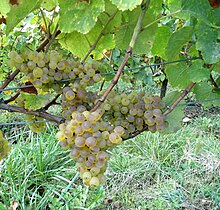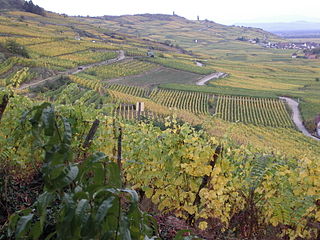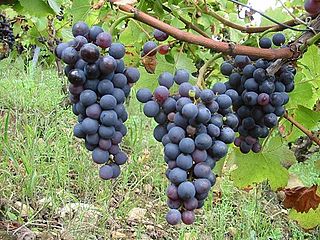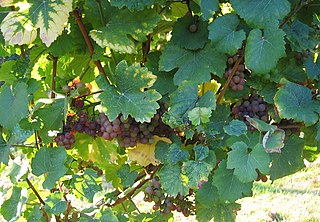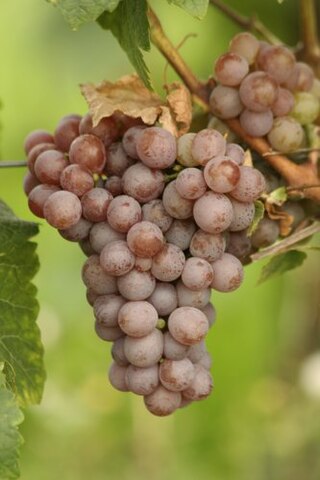History
The history of Savagnin is complicated and not helped by its rather unstable genome. The story starts with the ancient Traminer variety, a green-skinned grape recorded in the Tyrolean village of Tramin from ca. 1000 until the 16th century. (This region now lies in the Italian province of South Tyrol). The famous ampelographer Pierre Galet thought that Traminer was identical to the green-skinned Savagnin blanc in the Jura. [1] More recently it has been suggested that Savagnin blanc acquired slight differences in its leaf shape and geraniol content [2] as it travelled to the other end of the Alps.
Frankisch in Austria, Heida and Païen in Switzerland, Furmint in Hungary and tramín bílý (brynšt) from Bohemia are all very similar to Savagnin blanc and probably represent clones of the Traminer family, if not Traminer itself. The Viognier of the Rhone Valley may be a more distant relative of Savagnin blanc.
At some point, either Traminer or Savagnin blanc mutated into a form with pink-skinned berries, called Red Traminer or Savagnin rose. Galet believed that a musqué ('muscat-like') mutation in the Red Traminer/Savagnin rose then led to the extra-aromatic Gewürztraminer, although in Germany these names are all regarded as synonymous.
Given that the wine made from 'Gewürztraminer' in Germany can be much less aromatic than that made in Alsace, some of the German vines may well be misidentified Savagnin rose. The Baden vineyard of Durbach claims its own type of Red Traminer called Durbacher Clevner (not to be confused with "Klevner", an Austrian synonym for Pinot blanc). The story goes that in 1780 Karl Friedrich, Grand Duke of Baden brought vines from Chiavenna in Italy, halfway between Tramin and the Jura, which was known to the Germans as Cleven.
The Klevener de Heiligenstein or Heiligensteiner Klevener found around Heiligenstein in Alsace may represent an outpost of the Durbach vines.
The varieties Aubin blanc and the Champagne grape Petit Meslier may be the result of a cross between Gouais blanc and Savagnin blanc.
Synonyms
As explained above, genetic instability means that the Traminer/Savagnin group should be regarded as a family of related clones rather than distinct varieties. These are the synonyms currently listed by Geilweilerhof for Savagnin blanc :
Auvernat blanc, Bon blanc, Forment, Formentin blanc, Fraentsch, Fromenteau, Gentil blanc, Gruenedel, Princ Bily, Printsch Grau, Ryvola Bila, Schleitheimer, Servoyen blanc, Traminer D'Ore, Traminer Weiss, [8] Traminac.
With the red mutant, the Geilweilerhof see no difference between it and Gewürztraminer - and some of the synonyms below may belong to the original green-skinned form.
Auvernas rouge, Blanc Brun, Blanc Court, Bon blanc, Christkindeltraube, Clevner, Crovena Ruzica, Dreimaenner, Dreimannen, Dreipfennigholz, Drumin, Duret rouge, Edeltraube, Fermentin rouge, Fleischweiner, Fourmenteau rouge, Frencher, Fromente, Fromenteau, Fuszeres, Gentil Rose Aromatique, Gentil-duret rouge, Gentile blanc, Gewuerztraminer, Gringet, Gris rouge, Haiden, Kirmizi Traminer, Klaebinger, Klaevner, Kleinbraun, Kleinwiener, Livora Cervena, Mala Dinka, Marzimmer, Mirisavi Traminac, Nature, Nature rose, Noble rose, Nuernberger Rot, Pinat Cervena, Piros Tramini, Plant Paien, Princ Cerveny, Princt Cervena, Ranfoliza, Rotclevner, Rotedel, Roter Nuernberger, Roter Traminer, Rotfranken, Rothklauser, Rothweiner, Rothwiener, Rotklaevler, Rotklaevner, Rotklevner, Rousselet, Rusa, Ruska, Ryvola, Salvagnin, Sauvagnin, Savagnin jaune, Savagnin Rosa Aromatique, Savagnin rose, St. Klauser, Termeno Aromatico, Tramin Cerveny, Tramin Korenny, Traminac Crveni, Traminac Diseci, Traminac Mirisavi, Traminer, Traminer Aromatico, Traminer Musque, Traminer Parfume, Traminer Rot, Traminer Rozovyi, Tramini Piros, Trammener. [8]
